Renault Kangoo vs Kia EV5 – Differences & prices compared
Everyday use, family trips or long-distance drives – here’s where the differences show.
Discover whether Renault Kangoo or Kia EV5 fits your lifestyle better.
Costs and Efficiency: When it comes to price and running costs, the biggest differences usually appear. This is often where you see which car fits your budget better in the long run.
Renault Kangoo has a significantly advantage in terms of price – it starts at 23100 £, while the Kia EV5 costs 39400 £. That’s a price difference of around 16363 £.
In terms of energy consumption, the advantage goes to the Kia EV5: with 16.90 kWh per 100 km, it’s a bit more efficient than the Renault Kangoo with 20.20 kWh. That’s a difference of about 3.30 kWh.
As for range, the Kia EV5 performs significantly better – achieving up to 530 km, about 245 km more than the Renault Kangoo.
Engine and Performance: Under the bonnet, it becomes clear which model is tuned for sportiness and which one takes the lead when you hit the accelerator.
When it comes to engine power, the Kia EV5 has a convincingly edge – offering 218 HP compared to 130 HP. That’s roughly 88 HP more horsepower.
In acceleration from 0 to 100 km/h, the Kia EV5 is evident quicker – completing the sprint in 8.40 s, while the Renault Kangoo takes 11.60 s. That’s about 3.20 s faster.
In terms of top speed, the Renault Kangoo performs to a small extent better – reaching 184 km/h, while the Kia EV5 tops out at 165 km/h. The difference is around 19 km/h.
There’s also a difference in torque: Kia EV5 pulls barely noticeable stronger with 295 Nm compared to 270 Nm. That’s about 25 Nm difference.
Space and Everyday Use: Whether family car or daily driver – which one offers more room, flexibility and comfort?
Seats: Renault Kangoo offers distinct more seating capacity – 7 vs 5.
In curb weight, Renault Kangoo is evident lighter – 1585 kg compared to 2069 kg. The difference is around 484 kg.
In terms of boot space, the Renault Kangoo offers significantly more room – 950 L compared to 566 L. That’s a difference of about 384 L.
In maximum load capacity, the Renault Kangoo performs decisively better – up to 3050 L, which is about 1400 L more than the Kia EV5.
When it comes to payload, Renault Kangoo slightly takes the win – 609 kg compared to 511 kg. That’s a difference of about 98 kg.
Who wins the race?
The Renault Kangoo proves to be performs better in key areas and therefore becomes our DriveDuel Champion!
Renault Kangoo is the better all-rounder in this comparison.
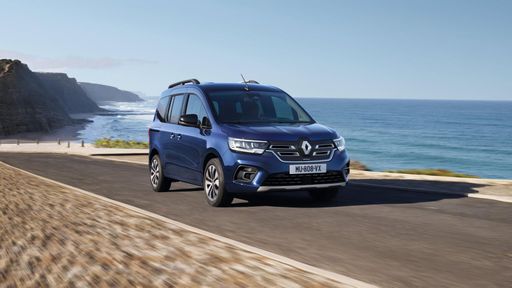
Renault Kangoo
Renault Kangoo
The Renault Kangoo high-roof van delivers a practical and versatile solution for both family and commercial use, with its spacious interior and adaptable seating arrangements. Its modern design and user-friendly features provide comfort and convenience, making it an appealing option for those needing a reliable workhorse. Additionally, the efficient engine options ensure a balanced approach to performance, keeping running costs manageable for everyday driving.
details @ Renault
@ Renault
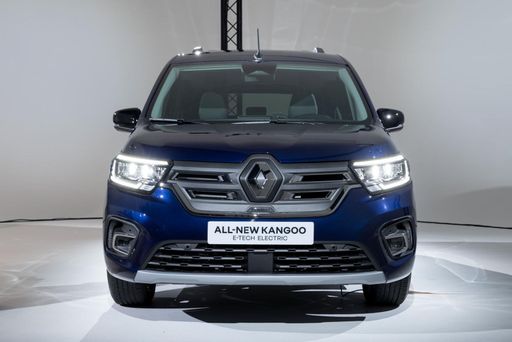 @ Renault
@ Renault
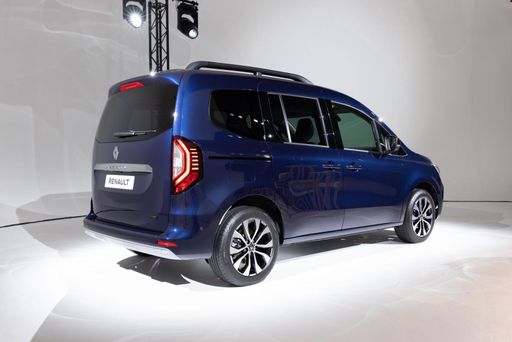 @ Renault
@ Renault
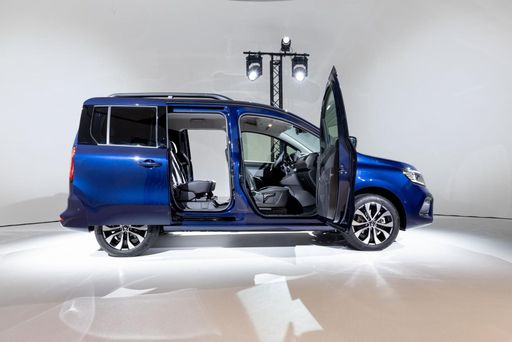 @ Renault
@ Renault
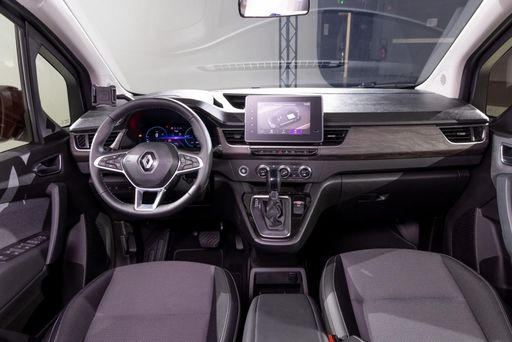 @ Renault
@ Renault
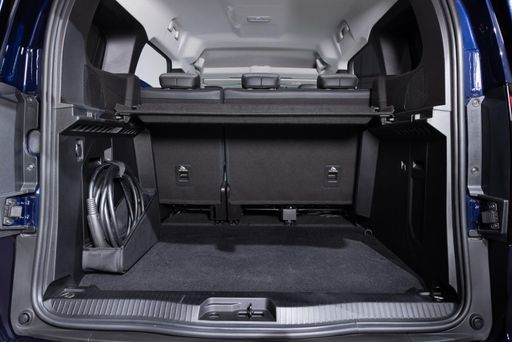 @ Renault
@ Renault
Kia EV5
Kia's EV5 is an exciting entry into the electric SUV market, showcasing the brand's commitment to sustainable mobility. With its modern design and advanced technology features, the EV5 promises to deliver a smooth and environmentally friendly driving experience. The interior offers a spacious and comfortable ride, making it an appealing choice for families and eco-conscious drivers alike.
details

|
|
|
|
|
Costs and Consumption |
|
|---|---|
|
Price
23100 - 36200 £
|
Price
39400 - 45400 £
|
|
Consumption L/100km
5.2 - 7.1 L
|
Consumption L/100km
-
|
|
Consumption kWh/100km
20.2 - 21.5 kWh
|
Consumption kWh/100km
16.9 - 17.8 kWh
|
|
Electric Range
278 - 285 km
|
Electric Range
505 - 530 km
|
|
Battery Capacity
-
|
Battery Capacity
81.40 kWh
|
|
co2
0 - 161 g/km
|
co2
0 g/km
|
|
Fuel tank capacity
54 L
|
Fuel tank capacity
-
|
Dimensions and Body |
|
|---|---|
|
Body Type
High Roof Estate
|
Body Type
SUV
|
|
Seats
5 - 7
|
Seats
5
|
|
Doors
5
|
Doors
5
|
|
Curb weight
1585 - 2041 kg
|
Curb weight
2069 kg
|
|
Trunk capacity
500 - 950 L
|
Trunk capacity
566 L
|
|
Length
4486 - 4911 mm
|
Length
4610 mm
|
|
Width
1860 - 1919 mm
|
Width
1875 mm
|
|
Height
1838 - 1869 mm
|
Height
1675 mm
|
|
Max trunk capacity
1296 - 3050 L
|
Max trunk capacity
1650 L
|
|
Payload
400 - 609 kg
|
Payload
511 kg
|
Engine and Performance |
|
|---|---|
|
Engine Type
Diesel, Petrol, Electric
|
Engine Type
Electric
|
|
Transmission
Manuel, Automatic
|
Transmission
Automatic
|
|
Transmission Detail
Manual Gearbox, Dual-Clutch Automatic, Reduction Gearbox
|
Transmission Detail
Reduction Gearbox
|
|
Drive Type
Front-Wheel Drive
|
Drive Type
Front-Wheel Drive
|
|
Power HP
95 - 130 HP
|
Power HP
218 HP
|
|
Acceleration 0-100km/h
11.6 - 15.6 s
|
Acceleration 0-100km/h
8.40 s
|
|
Max Speed
130 - 184 km/h
|
Max Speed
165 km/h
|
|
Torque
200 - 270 Nm
|
Torque
295 Nm
|
|
Number of Cylinders
4
|
Number of Cylinders
-
|
|
Power kW
70 - 96 kW
|
Power kW
160 kW
|
|
Engine capacity
1332 - 1461 cm3
|
Engine capacity
-
|
General |
|
|---|---|
|
Model Year
2022 - 2024
|
Model Year
2025
|
|
CO2 Efficiency Class
E, F, D, A
|
CO2 Efficiency Class
A
|
|
Brand
Renault
|
Brand
Kia
|
Is the Renault Kangoo offered with different drivetrains?
Available configurations include Front-Wheel Drive.
The prices and data displayed are estimates based on German list prices and may vary by country. This information is not legally binding.
